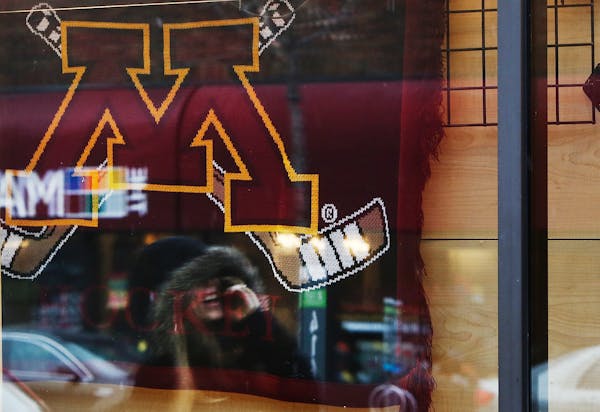Starting this fall, out-of-state students will face their biggest tuition hike in a dozen years, while in-state residents will face one of the smallest increases, under a plan approved Wednesday by the University of Minnesota Board of Regents.
But the board resisted pressure to widen the gap even more between the two groups of students.
The regents approved a 1.5 percent increase for in-state residents, the first such increase since 2012, and 7 percent for nonresidents, after a heated debate about who is getting the better deal at the state's premier research university.
Under the new rates, in-state tuition, which has been frozen since 2012, will grow by $180, to $12,240 a year at the Twin Cities campus, while the nonresident rate will climb by $1,350, to $20,660.
The plan represents a "balanced approach," said U President Eric Kaler. "It keeps tuition increases for resident students as low as possible."
A modest rate hike for in-state students was unavoidable because the Legislature declined to fully fund another tuition freeze, Kaler argued.
In recent weeks, the U has been under growing pressure from some state legislators to significantly raise out-of-state tuition, which is the lowest in the Big Ten.
Critics have argued that, in effect, hometown students are subsidizing the low rate for outsiders.
That argument played out at the board of regents meeting Wednesday, when two of the newest members, Darrin Rosha and Michael Hsu, proposed cutting tuition for Minnesota residents — by one-quarter percent — instead of an increase, and making up the difference, in part, by boosting out-of-state tuition by 10 to 12.6 percent.
Both proposals were voted down. "I'm uncomfortable with raising tuition 10 percent on anybody," said Regent Laura Brod.
Kaler noted that the 7 percent increase, which was approved by the board Wednesday, "represents the largest increase for out-of-state residents in 12 years." He said he agrees, in principle, that the U should gradually raise its out-of-state rates toward the middle range of the Big Ten, closer to $30,000 a year. But he warned that "raising out-of-state tuition too quickly and with little warning will burden students and their families" and drive students away.
Rep. Bob Barrett, R-Lindstrom, who has been pushing the U to shift course, said he was disappointed by Wednesday's decision. "Even after the 7 percent nonresident tuition increase that was approved, tuition paid by out-of-state kids will still be dead last in the [Big Ten] conference," he said. "That's how far out of balance the tuition rates are. Minnesota taxpayers and students will continue to subsidize these low nonresident tuition rates."
He was one of eight Republican legislators who sent a letter Tuesday to Kaler and the Board of Regents, urging them to cut in-state tuition and raise the price on nonresidents more aggressively.
Kaler, however, said he didn't want to jeopardize the U as it seeks to build enrollment from other states. In 2008, the U cut nonresident tuition by a third, almost $7,000, in an attempt to draw more students from Illinois, California and other states. The strategy paid off, he said, tripling the number of nonresident students (outside of Wisconsin and the Dakotas), and increasing out-of-state tuition income from $20 million a year to more than $100 million.
Kaler also defended the 1.5 percent increase in in-state tuition, noting that it will not result in higher costs for 42 percent of students. He said the $180 increase would be covered by increases in federal and state grants for low-income students, and by the U's Promise grant for families with incomes up to $100,000.
In addition to tuition, room and board rates will go up just over 2 percent, to $8,744 on the Twin Cities campus. The numbers vary slightly by campus.
Kaler said that the increases are needed to cover pay increases and other rising costs.
Maura Lerner • 612-673-7384

Minnesota State Patrol celebrates diverse new class of troopers

Records: Former Minneapolis police oversight head disparaged women, threatened staff
Video goes viral of man enduring 'shocking' chain whipping on downtown St. Paul street
Minnesota sales, clean-ups and other events to celebrate Earth Day and Arbor Day

